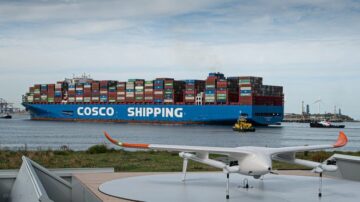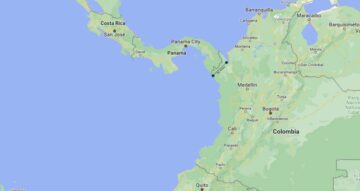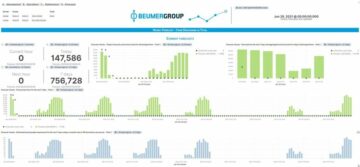Billions of pounds of stretch film are consumed annually, wrapping tens of billions of loads based on the original Lantech concept for stretch wrapping . This packaging method significantly impacts our planet due to its material consumption. Packaging material is essential for protecting goods during shipment and ensuring damage-free transportation. However, more environmentally damaging than the use of packaging materials are the goods destroyed during transport, which then end up as waste.
Recent laws mandating a closed-loop recycling process and a percentage of Post-Consumer Recycled (PCR) material in stretch films have introduced numerous alternative film products to the market. Brand owners, plastic suppliers, and film companies face difficult and complex decisions.
The Challenge
Currently, about half of all plastics are defined as single-use plastics. The improper disposal of single-use plastics at the end of their life cycle significantly contributes to waste accumulation, air and water pollution, and greenhouse gases, harming our ecosystem and endangering global health. Stretch film, used for unitizing or bundling loads, is considered a single-use plastic under current regulations. The future goal is to avoid these plastics as much as possible, prompting companies to find environmentally friendly alternatives urgently.
Despite the controversy surrounding plastic, stretch film is a remarkably efficient material. A truckload of over 18 tons of palletized products can be secured with a minimal amount of stretch film. If such a pallet load were to be destroyed due to inadequate transport security, the environmental damage would be much greater.
Current Conditions: Low Recycling Rates
Although technically possible to recycle stretch film back into stretch film (a closed loop), the recycling rate in the USA is estimated at only 21 percent and in Europe at 30 percent. Only a small amount of recycled stretch film is processed back into new stretch film.
Test Design
The test design aimed to create an objective and accurate comparison of materials based on weight, cost, and CO2 footprint required for load containment during transport.
Setting thresholds for containment force represents a significant difference from similar publications. All materials were thoroughly tested with a variety of loads before the test. However, the final test protocol used the same load for all products, keeping all other controllable factors constant. Machine settings were optimized based on material properties to minimize film breaks with the least amount of material required to achieve the necessary containment force.
Tested Alternatives
HexelStretch was tested on a Lantech Q300 Stretch Wrapper, and Mondi Advantage paper was tested on a Lantech G Series Stretch Wrapper with special modifications for paper. The PCR films (30 percent PCR (80 Gauge)) and virgin resin films (100 percent virgin resin (60 Gauge)) were tested on a Lantech SLA Stretch Wrapper. The stretchable materials (HexcelStretch™, PCR, and virgin resin film) were measured with a Lantech CFT-6 (Containment Force Tool)8, and the wrapping tension of Mondi Advantage paper was determined with the scale part of the Lantech CFT-6.
Paper-Based Alternative HexcelStretch
The paper-based alternative HexcelStretch is a 100% paper-based, fully recyclable, and plastic-free packaging system.
Compared to stretch film, the material has a relatively low retention force. Generally, the material reaches a tensile force of less than 26,688 N, leading to a stretch of about 60 percent during the wrapping process. The product has a maximum stretchability of about 85 percent with a breaking strength of about 40,032 N. The tear strength is about 31,136 N. The paper-based alternative requires more wraps than a comparable strength stretch film to achieve a certain retention force.
HexcelStretch Wrapping Process with Lantech Q300
The load’s attachment to the pallet is inadequate. The packaging material requires a semi-automatic wrapper and is not compatible with fully automatic machines. Unpacking is challenging, as the weight and volume are five to ten times higher than conventional film.
A roll with a ten-inch diameter only lasts for seven to ten loads, whereas a normal film roll can package 50 to 100 loads. Thus, the paper-based alternative only manages about 10 percent of the loads that can be packaged with a plastic film roll. The weight of the material required to achieve the necessary retention force alone significantly increases the CO2 footprint, not to mention transportation costs.
Paper from Virgin Fibers
Mondi Advantage StretchWrap is lightweight paper made from 100 percent virgin fibers. It is stretchable and puncture-resistant, making it ideal for wrapping pallets to protect goods during transport. After use, the material can be easily recycled.
Results
Mondi paper is not stretchable like conventional film and does not adapt to the shape of the load. The layers do not adhere tightly enough to each other to maintain the wrapping profile during vibrations in transit. Securing the load to the pallet (especially for internal loads) is problematic without adjusting the wrapper. The paper wrapping designed for the test incorporates adhesive in the first and last wraps.
Disadvantages
Using paper from fresh fibres requires a new wrapping machine and is limited to stable, vertical load profiles. Unpacking is cumbersome. For internal loads, two to three additional wrappings are required. Moisture endangers the strength. Moreover, the rigid product does not stretch during wrapping and cannot respond to a reduction in circumference during transport (rubber band effect). A roll with a ten-inch diameter is only sufficient for eight to twelve loads.
30% PCR Film
Post-Consumer Recycled (PCR) stretch film must be collected after use. It is then sorted and cleaned of labels, adhesive, ink, and foreign objects before being pelletized into resin and mixed with new resin to create PCR stretch film.
The 30% PCR film (80 Gauge, manufactured by Sigma Stretch Films USA) was tested.
Results
The purity and consistency of the PCR resin are critical for the consistent minimum performance of the stretch film produced from it. Gels and incompatible materials in PCR resin significantly impair durability during pre-stretching. PCR resin results in substantially more gels, leading to premature tears. PCR stretch films have over 50 times more measurable defects per roll than pure resin stretch films. In the trials, pre-stretching was reduced to maintain film tears at an acceptable level, doubling the consumption needed to achieve the required retention force.
The tests demonstrate that PCR films for the same load require 43 percent more fresh resin in a 70/30 blend than 100% pure resin films.
A sufficient flow of PCR, necessary for stretch films, requires higher investments to integrate the product into the processing cycle. EPR legislation will penalize stretch film manufacturers without PCR in the future to initiate the necessary changes in the recycling cycle.
Disadvantages
For PCR resin, an additional cost of 30 percent compared to new material is predicted. Chemically recycled film processed into stretch film could mean up to 100 percent additional costs. These burdens are unacceptable for companies, as is the increased risk of product damage. The test only considered the CO2 footprint of PCR. Leading indicators such as transport to and from recycling facilities and the energy and water demand during processing show that recycled resin still has many challenges to overcome in the eco-balance to surpass pure resin.
100% Pure Resin Film
Pure resin films are made from polyethylene resin granules. After use, the pure resin film can be recycled with other plastics. Ideally, however, the film is collected separately, compacted, and transported to an intermediate product recycling facility.
Lantech tested 100% pure resin film Axis 60 Gauge by Maipack, Canada.
Results
The ultra-high-quality stretch film used in the tests was stronger and more resistant to tearing by gels or flaws in the film and sharp corners on the load. The same optimization tests were conducted as with the PCR-based samples, resulting in a pre-stretch of 275 percent. The stretch at the load and the pre-stretch were identical. The stresses simulated on the acceleration and shake table correspond to real transport conditions.
Conclusion
Lowest costs and smallest CO2 footprint: 100% Pure Resin Film
The 100% pure resin film caused the lowest costs and the smallest CO2 footprint. Adding PCR to stretch film is not sustainable. Reducing pre-stretch and wrapping force to avoid film breakage with PCR-containing stretch film can require up to 50% more film weight to maintain the required holding force. To ensure a minimum performance of the film, the content, purity, and consistency of the PCR resin are crucial. Currently, PCR resin shows a much stronger gel formation than pure resin, leading to premature film breaks.
A significant reduction in consumption is possible
Besides choosing the right film, reducing the amount offers savings potential for production and distribution centers. Better use of the film can reduce costs and improve the eco-balance without compromising the safety or quality of the load. Improvements in wrapping technology and film quality can also reduce consumption while maintaining the quality of the wrapping.
Author Bio
Pat Lancaster is the Founder and CEO of Lantech.
Lantech, the packaging machine manufacturer, is a global leader in stretch wrappers and in robust and efficient carton and tray handling machines. Founded in 1972, the family-owned company from the United States developed the world’s first rotary stretch wrapping machine and has continuously optimized this technology since then. Today, Lantech employs around 750 people. The European headquarters is located in Malden, Netherlands.
- SEO Powered Content & PR Distribution. Get Amplified Today.
- PlatoData.Network Vertical Generative Ai. Empower Yourself. Access Here.
- PlatoAiStream. Web3 Intelligence. Knowledge Amplified. Access Here.
- PlatoESG. Carbon, CleanTech, Energy, Environment, Solar, Waste Management. Access Here.
- PlatoHealth. Biotech and Clinical Trials Intelligence. Access Here.
- Source: https://logisticsmatter.com/alternatives-to-single-use-plastic-stretch-films-a-product-test-on-performance-and-environmental-compatibility/
- :has
- :is
- :not
- $UP
- 10
- 100
- 16
- 21
- 26
- 30
- 31
- 40
- 50
- 60
- 750
- 80
- a
- About
- acceleration
- acceptable
- accumulation
- accurate
- Achieve
- adapt
- adding
- Additional
- adhere
- adjusting
- ADvantage
- After
- aimed
- AIR
- All
- alone
- also
- alternative
- alternatives
- amount
- an
- and
- Annually
- ARE
- around
- AS
- At
- Automatic
- avoid
- Axis
- back
- BAND
- based
- BE
- before
- being
- Better
- billions
- Blend
- brand
- Breaking
- breaks
- by
- CAN
- Canada
- cannot
- caused
- Centers
- ceo
- certain
- challenges
- challenging
- Changes
- choosing
- closed
- co2
- collected
- Companies
- company
- comparable
- compared
- comparison
- compatibility
- compatible
- complex
- compromising
- concept
- conditions
- conducted
- considered
- consistency
- consistent
- constant
- consumed
- consumption
- Containment
- content
- continuously
- contributes
- controversy
- conventional
- corners
- correspond
- Cost
- Costs
- could
- create
- critical
- crucial
- cumbersome
- Current
- Currently
- cycle
- damage
- damaging
- decisions
- defined
- Demand
- demonstrate
- Design
- designed
- destroyed
- determined
- developed
- difference
- difficult
- disposal
- distribution
- do
- does
- doubling
- due
- durability
- during
- each
- easily
- ecosystem
- effect
- efficient
- eight
- employs
- end
- endangering
- energy
- enough
- ensure
- ensuring
- environmental
- environmentally
- environmentally friendly
- especially
- essential
- estimated
- Europe
- European
- Face
- facilities
- Facility
- factors
- fibers
- Film
- films
- final
- Find
- First
- five
- flaws
- flow
- Footprint
- For
- Force
- foreign
- formation
- Founded
- founder
- Founder and CEO
- fresh
- friendly
- from
- fully
- future
- gauge
- generally
- Global
- Global health
- goal
- goods
- greater
- Half
- Handling
- harming
- Have
- Headquarters
- Health
- higher
- holding
- However
- HTTPS
- ideal
- ideally
- identical
- if
- Impacts
- improve
- improvements
- in
- incompatible
- incorporates
- increased
- Increases
- Indicators
- initiate
- integrate
- Intermediate
- internal
- into
- introduced
- Investments
- IT
- ITS
- Jim
- jpg
- keeping
- Labels
- Last
- Laws
- layers
- leader
- leading
- least
- Legislation
- less
- Level
- Life
- lightweight
- like
- Limited
- load
- loads
- located
- Low
- lowest
- machine
- Machines
- made
- maintain
- maintaining
- Making
- manages
- mandating
- manufactured
- Manufacturer
- Manufacturers
- many
- Market
- material
- materials
- maximum
- mean
- measured
- mention
- method
- minimal
- minimize
- minimum
- mixed
- Modifications
- more
- Moreover
- much
- must
- necessary
- needed
- Netherlands
- New
- normal
- numerous
- objective
- objects
- of
- Offers
- on
- only
- optimization
- optimized
- or
- original
- Other
- our
- over
- Overcome
- owners
- package
- packaged
- packaging
- Paper
- paper-based
- part
- PCR
- People
- per
- percent
- percentage
- performance
- planet
- plastic
- plastics
- plato
- Plato Data Intelligence
- PlatoData
- Pollution
- possible
- potential
- pounds
- predicted
- Premature
- process
- processed
- processing
- Produced
- Product
- product test
- Production
- Products
- Profile
- Profiles
- properties
- protect
- protecting
- protocol
- publications
- pure
- quality
- Rate
- Reaches
- real
- recycled
- recycling
- reduce
- Reduced
- reducing
- reduction
- regulations
- relatively
- represents
- require
- required
- requires
- Resin
- resistant
- Respond
- resulting
- Results
- retention
- right
- rigid
- Risk
- robust
- Roll
- rubber
- Safety
- same
- Savings
- Scale
- Secured
- securing
- security
- separately
- Series
- settings
- seven
- Shape
- sharp
- show
- Shows
- Sigma
- significant
- significantly
- similar
- since
- small
- smallest
- special
- stable
- States
- Still
- strength
- stretch
- stronger
- substantially
- such
- sufficient
- suppliers
- surpass
- Surrounding
- sustainable
- system
- table
- technically
- Technology
- ten
- tens
- test
- tested
- tests
- than
- that
- The
- The Future
- their
- then
- These
- this
- thoroughly
- three
- Thus
- tightly
- times
- to
- today
- tons
- tool
- transit
- transport
- transportation
- transported
- trials
- Truckload
- two
- under
- United
- United States
- Unpacking
- urgently
- USA
- use
- used
- variety
- vertical
- Virgin
- volume
- was
- Waste
- Water
- webp
- weight
- were
- whereas
- which
- while
- will
- with
- without
- world’s
- would
- wrapping
- zephyrnet













